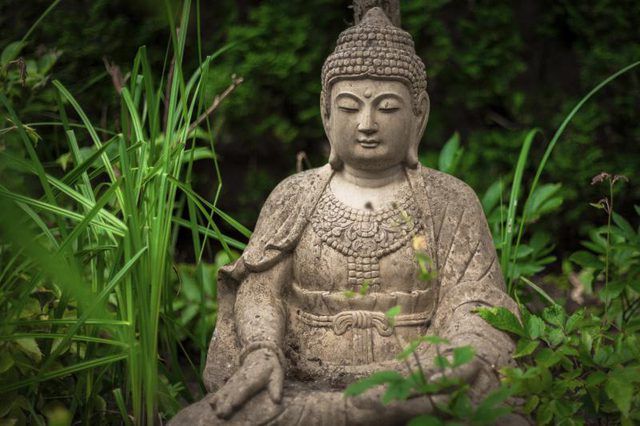Bulbs
Flower Basics
Flower Beds & Specialty Gardens
Flower Garden
Garden Furniture
Garden Gnomes
Garden Seeds
Garden Sheds
Garden Statues
Garden Tools & Supplies
Gardening Basics
Green & Organic
Groundcovers & Vines
Growing Annuals
Growing Basil
Growing Beans
Growing Berries
Growing Blueberries
Growing Cactus
Growing Corn
Growing Cotton
Growing Edibles
Growing Flowers
Growing Garlic
Growing Grapes
Growing Grass
Growing Herbs
Growing Jasmine
Growing Mint
Growing Mushrooms
Orchids
Growing Peanuts
Growing Perennials
Growing Plants
Growing Rosemary
Growing Roses
Growing Strawberries
Growing Sunflowers
Growing Thyme
Growing Tomatoes
Growing Tulips
Growing Vegetables
Herb Basics
Herb Garden
Indoor Growing
Landscaping Basics
Landscaping Patios
Landscaping Plants
Landscaping Shrubs
Landscaping Trees
Landscaping Walks & Pathways
Lawn Basics
Lawn Maintenance
Lawn Mowers
Lawn Ornaments
Lawn Planting
Lawn Tools
Outdoor Growing
Overall Landscape Planning
Pests, Weeds & Problems
Plant Basics
Rock Garden
Rose Garden
Shrubs
Soil
Specialty Gardens
Trees
Vegetable Garden
Yard Maintenance
How to Design an Asian Garden
How to Design an Asian Garden. Asian gardens are known for their sense of tranquility and simplicity as well as their celebration of natural elements beyond traditional plants. That is why an Asian-inspired garden design is an ideal option if you want to create a quiet spot for reflection in your yard. The key to getting the look right is focusing...

Asian gardens are known for their sense of tranquility and simplicity as well as their celebration of natural elements beyond traditional plants. That is why an Asian-inspired garden design is an ideal option if you want to create a quiet spot for reflection in your yard. The key to getting the look right is focusing on a few classic plants and accessories for a streamlined layout that evokes plenty of calm.
Keep it Simple
In an Asian garden, less is definitely more. So keep your design simple. You donít need to fill every available space with dramatic, towering plants or striking accessories. In fact, you can create a greater impact by pairing focal points such as a large tree or statue with ground-cover plants that have a more subtle appearance. Spread your statement pieces throughout the garden so the design has a sense of balance and guests experience a feeling of discovery as they wander through the landscape.
Use Traditional Plants
Certain plants are essential if you want a traditional look for your Asian garden. Trees such as the Japanese maple (Acer palmatum), hardy in U.S. Department of Agriculture plant hardiness zones 5b through 8, and the "Kanzan" Japanese flowering cherry (Prunus "Kanzan," USDA zones 5 through 9) will anchor your garden. Pair them with shrubs such as "Girard's Rose" evergreen azalea (Rhododendron "Girardís Rose," USDA zones 5 through 8) and "Sea Green" Chinese juniper (Juniperus x pfitzeriana "Sea Green," USDA zones 4 through 9) to add lower points of visual interest. Finish your plantings with ground-cover plants that add greenery to your garden without pulling attention from larger plants and focal points. The vine star jasmine (Trachelospermum jasminoides, USDA zones 8 through 10) is an option because it grows quickly and does well in heavy shade that larger trees surrounding it may create.
Introduce Other Natural Elements
Traditional Asian gardens make use of natural items beyond plants, and those materials should be incorporated in your garden design. Stone is often used to represent mountains. So mix some decorative boulders among your plantings, or use pea gravel to surround plants or as paving material for curved paths through the garden. You also can use sand to represent the ocean in your garden; add a bed of sand to an empty spot in your landscape, and keep it neatly raked. A water feature also works well in an Asian-inspired garden. Consider adding a koi pond to create an ambiance of calm and tranquility in your yard.
Add a Statue
Art pieces can play an important role in Asian garden design. In particular, stone statues are ideal focal points to mix among plantings. A pagoda tower fits the theme well; you could even create a vignette of several pagodas of differing heights in an area of your garden. For a more dramatic look, try a dragon statue. Of course, you canít go wrong with a Buddha statue in your garden either, but ensure itís not just of his head, which is thought to be a disrespectful defacement of the deity in Asian culture. Instead, choose a statue that features the entire body of Buddha to celebrate him in your landscape.